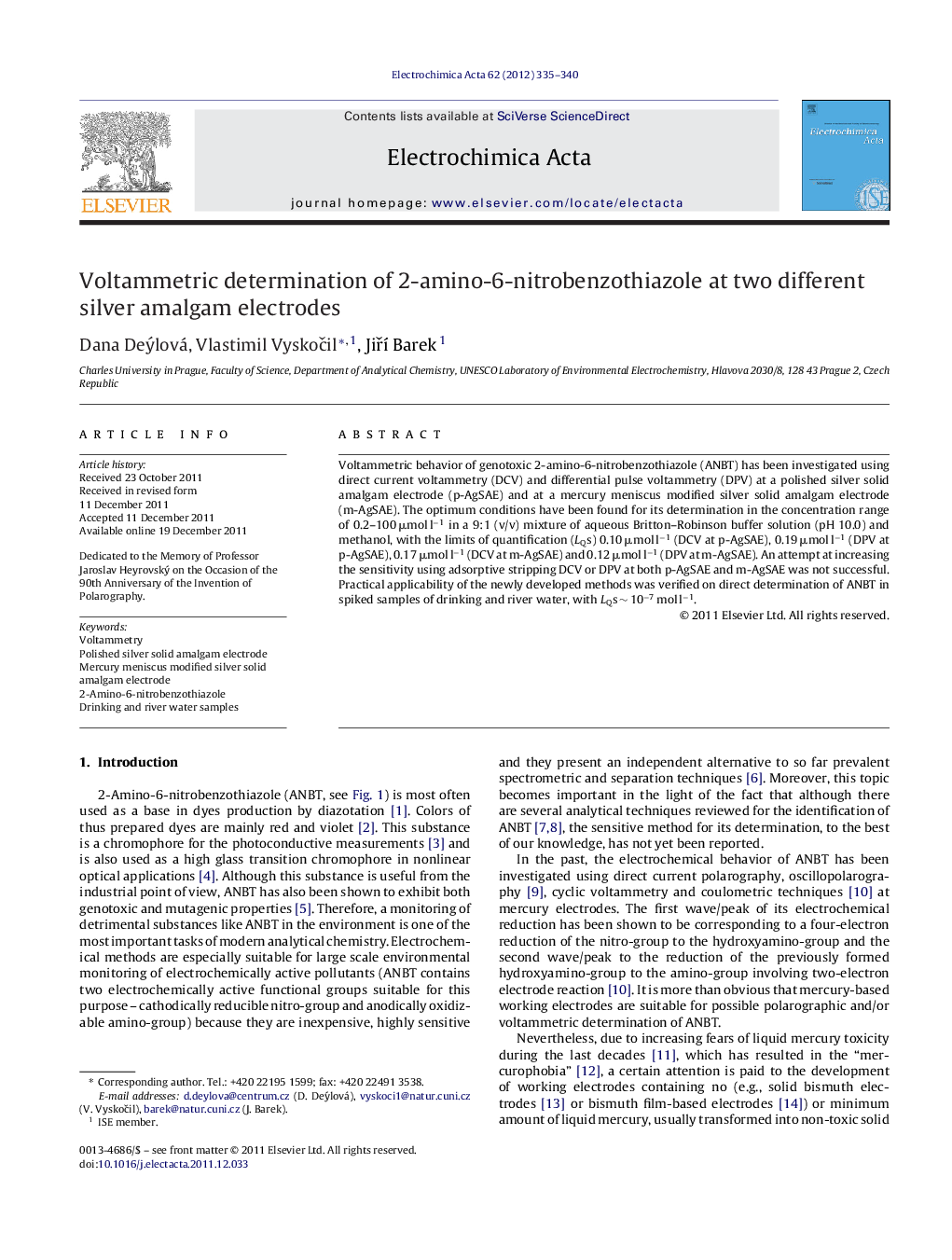| Article ID | Journal | Published Year | Pages | File Type |
|---|---|---|---|---|
| 189062 | Electrochimica Acta | 2012 | 6 Pages |
Voltammetric behavior of genotoxic 2-amino-6-nitrobenzothiazole (ANBT) has been investigated using direct current voltammetry (DCV) and differential pulse voltammetry (DPV) at a polished silver solid amalgam electrode (p-AgSAE) and at a mercury meniscus modified silver solid amalgam electrode (m-AgSAE). The optimum conditions have been found for its determination in the concentration range of 0.2–100 μmol l−1 in a 9:1 (v/v) mixture of aqueous Britton–Robinson buffer solution (pH 10.0) and methanol, with the limits of quantification (LQs) 0.10 μmol l−1 (DCV at p-AgSAE), 0.19 μmol l−1 (DPV at p-AgSAE), 0.17 μmol l−1 (DCV at m-AgSAE) and 0.12 μmol l−1 (DPV at m-AgSAE). An attempt at increasing the sensitivity using adsorptive stripping DCV or DPV at both p-AgSAE and m-AgSAE was not successful. Practical applicability of the newly developed methods was verified on direct determination of ANBT in spiked samples of drinking and river water, with LQs ∼ 10−7 mol l−1.
Graphical abstractFigure optionsDownload full-size imageDownload as PowerPoint slideHighlights► Voltammetric determination of genotoxic 2-amino-6-nitrobenzothiazole. ► Utilization of a polished silver solid amalgam electrode. ► Utilization of a mercury meniscus modified silver solid amalgam electrode. ► Determination of the analyte in spiked samples of drinking and river water. ► Limits of quantification for the developed methods in submicromolar concentrations.
